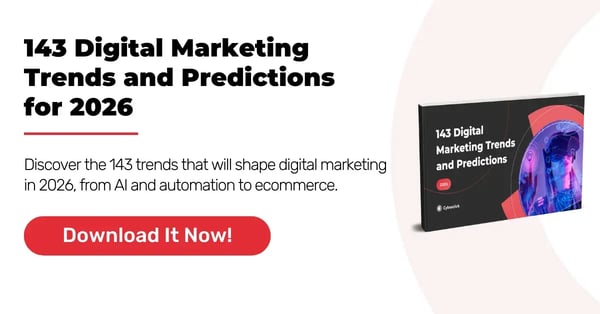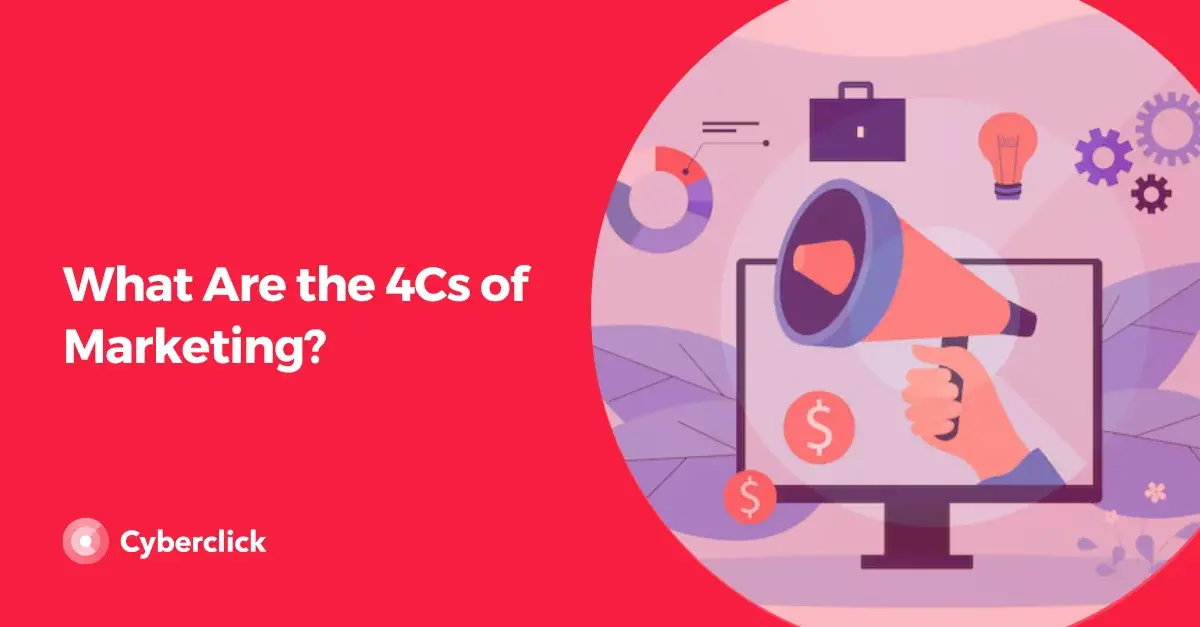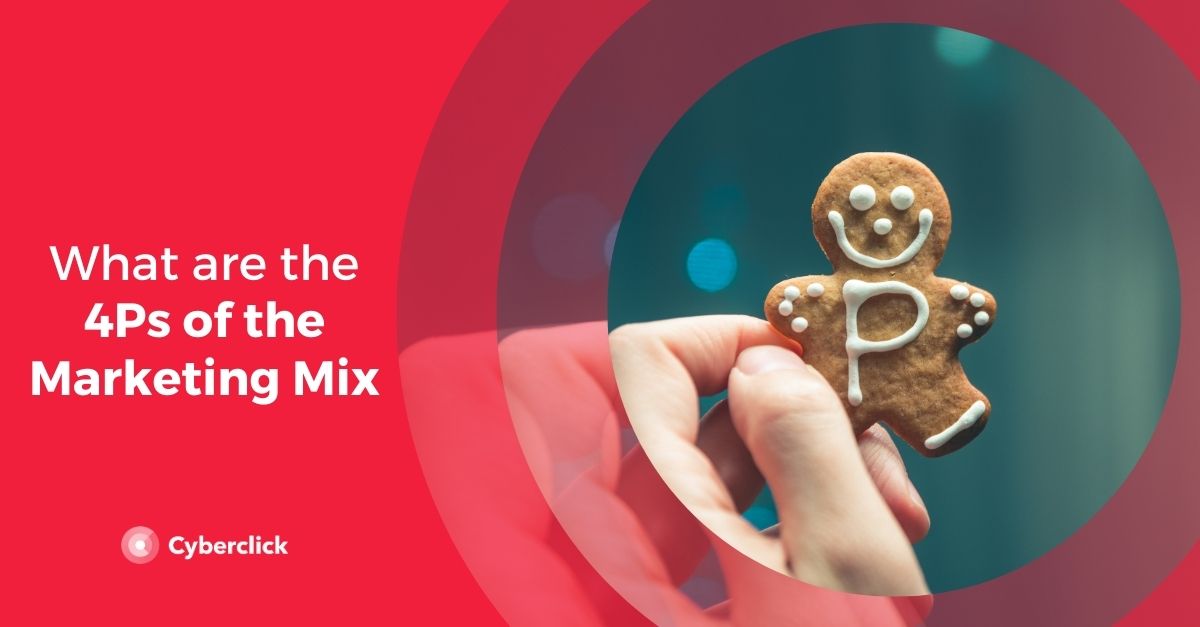The definition of the marketing mix is all the steps that a company takes in order to promote its product or service. These are often divided into the 4Ps of marketing: Product (or Service), Place, Price, and Promotion. But what is it exactly that we need to ask ourselves to define and truly understand each of these points?
Some examples of these questions are the needs that our product solves or the benefits it offers, where our clients can obtain it and how we can access distribution points, what the manufacturing costs and profit margins are and should be, and what advertising formats can be used to make the message reach the right audience.
What Are the 4Ps and What Questions Should I Be Asking?
The marketing mix is a concept that's used to talk about all the decisions and actions that brands make to launch a product or service. There are different ways of classifying these decisions.
The 4Ps are probably the most well-known and useful, but there are also models such as the 7Ps (a broader version of the 4Ps) and even the 4Cs (from the consumer’s point of view).
The 4Ps of marketing can be summed up as putting the right product in the right place at the right time and a fair price. This may seem simple but, in reality, a lot of work has to go into this. It's crucial to research the market to see where exactly your product or service can fit, and then develop a marketing strategy based on the information you have compiled.
Although the 4Ps are not new (they were mentioned for the first time by E. J. McCarthy in the 60s), they continue to be one of the most useful classifications to quickly address each of the key points in a marketing strategy.
Each of the 4Ps has several aspects that need to be considered, so you may feel slightly overwhelmed when it comes to actually making decisions. To make your job a little easier, we’ve also created a list of questions for each aspect that you should ask yourself when defining your 4P strategy.
1. Product (or Service)
The first of the 4Ps refers to the product (or service), which is at the heart of the marketing strategy. From a modern marketing point of view, it is preferable to define the product based on the needs and motivations of the client and the benefits the product brings them, rather than its characteristics or features.
Within this P, you should define the products your brand has to offer, what their life cycles are, and how they can be differentiated from the competition’s products. The image, the branding, the packaging, and the post-sale services also come into play here.
Questions to Ask About a Product or Service
-
What do the consumers of my product/service want?
-
What are the benefits it offers?
-
What needs does it satisfy?
-
Are there other ways to satisfy the same needs? If so, what advantages and disadvantages does mine have in comparison?
-
What are the characteristics of the product/service? Is there anything missing that could make it better? Am I including anything that is costly but does not add enough value?
-
How and where is my product going to be used? Are there different usage scenarios?
-
What does it look like? Are there different sizes, colors, etc.?
-
How does it complement other products or services, either from my company or others?
-
What must the consumer’s experience be like when using it?
-
What is it called?
-
What differentiates it from the competition?
2. Place
The second of the 4Ps is all about defining and managing the channels through which a product reaches consumers. The strategic sales points can range from ecommerce, to a regional store, to a chain with physical stores in several countries.
The goal of the distribution strategy is to make it easy for consumers to access the product and optimize the sales process by providing a smooth shopping experience. To do this, it's important to consider decisions relating to storage, inventory management, transportation, sales point locations, online and offline requests, etc.
Questions About Sales and Distribution
-
Where do clients get my product/service? Specialized stores? Supermarkets? Online?
-
How can I access the appropriate distribution channels?
-
Do I need a sales force? Should I be attending events in my industry? Should I send samples to companies? Should I contact online retailers? Should I launch my own online store?
-
What is my competition doing, and how can I learn from them or differentiate myself from them?
3. Price
The third of the 4Ps refers to the final price of your product or service. This is one of the most complex marketing decisions, as a series of factors are at play such as:
-
The product’s manufacturing costs
-
The commercial revenue you expect to receive
-
The company’s economic goals
-
The demand for your product or service
-
Your competitor’s prices
-
The consumers’ purchasing power
-
Trends and preferences
-
The positioning of the product-- it can be beneficial to increase the price to give the impression of better quality
When it comes time to choose the price, you should keep things such as payment methods, discounts, and loyalty programs in mind.
Questions About the Price
-
What is the manufacturing cost of my product/service?
-
What profit margin do I need?
-
What value does my product/service hold for the consumer?
-
What are the average prices of products/services similar to mine?
-
How sensitive is my client to pricing? Is it possible that a small decrease in price might attract many more clients or that a small increase would go unnoticed?
-
Can I offer discounts and promotions in certain seasons or to certain types of clients?
4. Promotion
Now we've come to the fourth P, which stands for promotion. Promotion refers to all the actions taken to communicate the benefits of your products and services in order to increase sales. This includes everything from advertising and public relations to social ads and direct marketing.
As traditional as your product or service may be, you need to keep up with trends and with the latest marketing technologies. In today’s day and age, digital marketing has a huge influence, so make the most of it.
Questions About Promotion
-
How can I make my message reach the right audience?
-
Which of the following are more appropriate for me: banner ads, search engine marketing, social ads, radio, press, TV, billboards, direct marketing, email marketing, etc.?
-
When is the best time to promote? Does my product or service depend on seasons?
-
What are my competitors doing, and how should that influence my decisions?
-
What KPIs am I going to use to measure the results of my promotional efforts?
Using the 4Ps of Marketing
Whether you are looking to launch a new product or service, or refining your current marketing strategy, the 4Ps have a lot to offer. This step-by-step plan should help you make the absolute most of this classic marketing formula.
-
First, identify the product or service you need to analyze.
-
Second, answer the questions listed above and base your answers on objective facts. If you have any questions or feel you don’t have the necessary information, it's time to invest in a good old market study.
-
Third, once you have defined your marketing mix through these questions, it's also a good idea to take a look from the consumer’s point of view.
-
Does the product/service satisfy their needs?
-
Will they find it at the sales points they frequent?
-
Will they find the price to be reflective of the value that the product or service brings?
-
Will they be receptive to the messages that will motivate them to buy it?
-
-
Fourth, create hypotheticals by challenging your answers with “why” and “what would happen if…?”. For example, “What would happen if I increased the price by 5%?” “What if I begin selling more sizes?” “Would having my own ecommerce be beneficial?” “What happens if I move 25% of my investment in Meta Ads to X (formerly Twitter) Ads?”.
-
Lastly, put your hypothetical cases from the last point into action, measure the results, and incorporate any necessary changes!
The Impact of the Digital Transformation on the 4Ps
In today's digital landscape, the 4Ps of marketing have evolved significantly:
- Product: Digital offerings like apps, subscriptions, and virtual products have redefined how businesses think about their products. Thus, make sure that your product it aligned with current digital trends like sustainability and customization.
- Place: Ecommerce and omnichannel strategies have blurred the lines between online and offline shopping, making "Place" more about customer experience than physical locations. Therefore, it is important to consider the entire omnichannel experience.
- Price: Dynamic pricing and AI-powered personalization allow businesses to adjust prices based on demand, customer behavior, and market conditions. Use these data-driven insights to optimize your strategy.
- Promotion: Social media and targeted advertising enable more precise and personalized promotional strategies. Make sure to take personalization into account.
Don’t forget to perform regular check-ups on your strategy because the market is changing more and more every day!
What is a real-life example of the marketing mix?
Coca-Cola exemplifies the marketing mix through its diverse product range, competitive pricing, extensive global distribution, and impactful promotions. This strategic blend has solidified its position as a leading beverage brand worldwide.
What is the marketing mix in one sentence?
The marketing mix is a strategic combination of product, price, place, and promotion that businesses use to meet customer needs and differentiate themselves from the competition.
What is the most important element in the marketing mix?
While all elements of the marketing mix are essential, price often stands out as the most important. It influences customers' perceptions of value, competitive positioning, and demand, impacting sales and brand positioning significantly.
What is the marketing mix or 7Ps?
The marketing mix, or 7Ps, includes product, price, place, promotion, people, process, and physical evidence. It’s a framework used to develop effective marketing strategies that meet customer needs and drive business growth.
What are customer gains?
Customer gains refer to the benefits, positive emotions, or improvements customers experience when using a product or service. These can include added value, convenience, cost savings, or satisfaction that exceeds customer expectations.
Responsable de la estrategia de contenidos y visibilidad en Cyberclick, con enfoque Allbound y especialización en posicionamiento SEO, GEO y automatización con IA. Gestión avanzada del CRM con HubSpot: base de datos, workflows, lead nurturing, scoring y reporting. Experiencia en marketing digital, comunicación corporativa y periodismo, uniendo estrategia, creatividad y tecnología para captar y convertir leads cualificados.
Responsible for content and brand visibility strategy at Cyberclick, with an Allbound approach and specialization in SEO, GEO (Generative Engine Optimization), and AI-powered automation. Advanced HubSpot CRM management: database segmentation, workflows, lead nurturing, scoring, and reporting. Background in digital marketing, corporate communications, and journalism—combining strategy, creativity, and technology to attract and convert qualified leads.






Leave your comment and join the conversation